Chinese Name: 胡同 Pronunciation: hú tòng
Ticket: Free
Opening Hours: 24 Hours
Recommended Time for Visit: 1-2 Hours
Address: Downtown Area in Beijing City
Building Time: Originated in the Yuan Dynasty
Best Visiting Time: All year round
Building Function: It used to be the location of the supervisors, bureaus, divisions, treasury and various yamen of the eunuchs of the inner government.
Hutongs in Beijing originated in the Yuan Dynasty. In the Yuan dynasty, the hutongs in Beijing were widely separated, and the distance between two families in Yuan dynasty was basically the distance of three large courtyards. Therefore, future generations built courtyards in the middle vacant land, and they must rely on small hutongs as access routes. In this way, a large number of unknown small hutongs were produced inside many famous big hutongs.

The formation of Beijing Hutong has changed and evolved with the formation of Beijing City. About half a million years ago, primitive people began to live in this land, but at that time they only lived in natural caves. About 10,000 to 5,000 years ago, primitive clan communes appeared here and began to live in simple houses. By 1045 BC, more than 3,000 years ago, this place became the capital of the slavery ancient Yan Kingdom, called Jicheng, but the city walls at that time were only built of rammed earth.
In 1276 AD, in the northeast of the original site of Jinzhong Capital, which was destroyed by war, the Yuan Dynasty established a large capital "like a chessboard" according to the principle of "Zhou Li"( one of Confucian classics). The houses and the courtyards were built one by one. After they are connected, there are rows of rows. Between one row and the other row, sunlight, ventilation, and access channels are required which formed hutongs, small streets and main streets.
It can be seen that the hutongs in Beijing are formed in the pattern of the Yuan Capital City. However, Yuandadu only recorded 29 hutongs at the time. At that time, it was clearly stated that the hutong was 9.24 meters wide. If it was 18 meters wide, it was called small street, and when it was 36 meters wide, it was called main street.
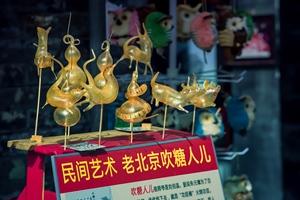
In 1403, the Ming Dynasty Yan Wang Zhu Di became the emperor and changed the city name to Beijing. Only then did the name "Beijing" appear. “Beijing” has been called 590 years, but it appeared a little later than the name "Hutong" for more than a hundred years.
After the Qing Dynasty settled the capital of Beijing, the people who moved to the outer city hurriedly built many new houses and courtyards, which together formed many new hutongs of various sizes, lengths, and standards or irregularities. At this time, the original rule of the Yuan Dynasty that the hutongs must be 9.24 meters wide has been gradually blurred, and the total number has increased to as many as 2,077.
In the early years of the Republic of China, with the opening of the Forbidden City, pedestrian could cross through Chang'an Avenue east to west. In this way, Beijing has a long latitude line that intersects with the central axis that runs north-south and crosses east-west at right angles. The latitude and longitude intersect in front of Tiananmen Square, forming a large cross coordinate, and the streets and hutongs develop outward from this center. The opening and adding of several new trunk roads accelerate the development of hutongs. By the 1940s, there were more than 3,200 streets and hutongs in Beijing.

Shichahai Hutong is the most valuable Hutong to visit. It is located in the downtown area of Xicheng District, adjacent to the central axis of Beijing. The water area covers an area of 336,000 square meters and is connected to the Zhongnanhai waters. It is the only opening scenic area in Beijing’s inner city with opening water, and it is also the largest and most fully preserved historical district in Beijing. It occupies a unique position in the history of Beijing's planning and construction. Among the 25 historical and cultural protection zones in Beijing approved in 2000, the Shichahai area is the largest.
Shichahai is a historical and cultural scenic spot in Beijing, including three lakes, Qianhai, Houhai and Xihai. The well-preserved Prince Gong’s Mansion and the criss-cross hutongs echo the ancient bell tower and drum tower. From the west side of Gulou Street, people can enter the Shichahai area and board the Yinding Bridge to stop and watch. When the sky is clear, you can see the clear outline of the mountain and the scenery is charming. On both sides of Houhai, there are Prince Gong’s Mansion, Guo Moruo’s Former Residence, and Song Qingling’s Former Residence. Drum Tower is not far away from that.
Shichahai Scenic Area has a profound historical and cultural accumulation, with more than 40 protected cultural relics units, accounting for more than one third of Xicheng District. In history, there were more than 30 palaces, temples, monasteries etc., in this area, and now there are still more than 10 palaces. The 34-hectare water surface of Shichahai is very naturally integrated into the urban blocks. Relying on the water, the weeping willows on the lakeshore and the lotus in the water have also became Shichahai's characteristic natural landscapes.
Wudaoying Hutong
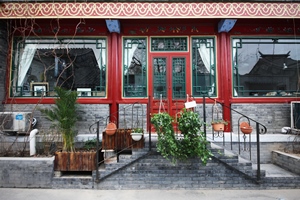
Wudaoying Hutong is located in the north of Dongcheng District, Beijing, on the east side of Andingmen Overpass. It is under the jurisdiction of Andingmen Sub-district Office. It starts from Yonghegong Street in the east, ends at Andingmen Inner Street in the west, connects with Jianchang Hutong in the south, and has two branch alleys leading to Andingmen East Street in the north. It has a total length of 632 meters and a width of 6 meters, with an asphalt pavement. Wudaoying Hutong in the Ming Dynasty was called Wudewei Camp, named after the stationed army.
Many foreigners are fond of Beijing’s Hutong culture, which makes the early investors stationed in Wudaoying mostly foreigners. Then some owners who opened stores in Nanluoguxiang and Gulou also heard the news and opened branches or new stores in Wudaoying. Hutong has developed into a new commercial street with unique creative characteristics, which has also attracted more investors.
Guozijian Hutong
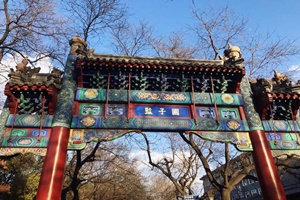
Guozijian Street, in Andingmen, Dongcheng District, Beijing, is an east-west hutong with a total length of 669 meters and an average width of 11 meters. The name "Chengxian Street" in the Qing Dynasty was named after the Confucian Temple and Guozijian here, which is also known as Guozijian Hutong. The Confucian Temple and Guozijian had been restored on June 14, 2008 to their historical patterns and regulations after being repaired. The ancient street of Guozijian, which has a history of more than 700 years, was re-displayed with its "old face" and opened to public again.
It was designated as a Beijing city-level cultural relic protection unit in 1984, and it is the only city-level cultural relic protection unit named after a street. A large number of historical and cultural relics such as the State-level cultural relic protection unit Guozijian and Confucian Temple are gathered in the ancient block. It is also the only archway street preserved in Beijing. It condenses the essence of Chinese traditional culture. With its rich historical and cultural connotations, it has became a unique cultural scenic spot in Beijing.
Guozijian was the highest institution established by the government in 1306 in the Yuan Dynasty, and continued to use in Ming and Qing dynasties. And it is also the authority in charge of the national studies. Guozijian has teaching subjects such as etiquette, music and dance, archery, driving, calligraphy and arithmetic. If people at that time could go to school at Guozijian, they would be regarded as an honor of whole family.
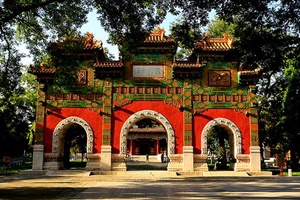
There are two temples in the south of Guozijian Hutong, the west is the deity temple, which was built in the Ming Dynasty. The main buildings include the mountain gate, the main hall, and the east-west side halls. The main hall is dedicated to the god of fire and Guandi, the god of wealth, Luban, the king of medicine, and the saint of medicine. There were originally three steles, which are now residential buildings. Because steles have been used as a step or built into a wall, it is impossible to know its content. Although the temples exist, they have changed too much. There are many small sheds in the courtyard, making it impossible for people to see their original appearance. Only the mountain gate still retains the traces of the old temples.
Guozijian Street is the only street with archways in Beijing. There are four archways in the street, one at each end of the east and west streets, with the title "Chengxian Street", and one on the left and right near the Guozijian, with the title "Guozijian". On Guozijian Street, there are Hanwengong Temple in memory of Han Yu, a great writer of the Tang Dynasty.
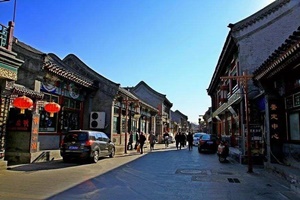
Liulichang Hutong is located outside the Hepingmen in Beijing, also named Liulichang Street, which is a famous cultural street in Beijing. It originated from the Qing Dynasty, where most of the people who came to Beijing to take part in the imperial examinations lived in this area. Therefore, there were many shops selling books, pens, ink, paper and inkstones here, which formed a strong cultural atmosphere.
The Beijing Liulichang Cultural Street, which is well-known at home and abroad, is about 800 meters long. In fact, as far back as the Liao Dynasty in history, here is not in city, but in suburb, called "Haiwang Village" at that time. Later, in the Yuan Dynasty, an official kiln was opened here to make glazed tiles.
Since the construction of the inner city in the Ming Dynasty, the scale of the official kiln has been enlarged due to the construction of the palace. After the construction of the outer city in 1553, this place belonged to urban area. Liulichang was not suitable for burning kilns any more, and the kilns were moved to Liuliqu Village in Mentougou District, but the name of "Liulichang" has been retained and passed down to today.
Since the reform and opening up, with the support and advocacy of governments at all levels in Beijing and Xuanwu District, Liulichang has been renovated and repaired many times, which gives this famous cultural street a new energy. Nowadays, Liulichang Cultural Street has became a place where books, calligraphy, painting, antiques, and four treasures of the study are gathered, and it has became a must-visit place for domestic and foreign tourists to know the old Beijing culture.
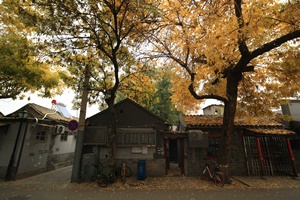
Route 1: Skewed Tobacco Pouch Street (Yandai Xiejie)→Shichahai Hutong
Route 2: Xijiaomin Lane→ Dashilan → Zhushikou → Liulichang Hutong
Route 3: Juer Hutong→South Gong and Drum Lane(Nanluoguxiang)
By Bus
a. Shichahai Hutong: Take bus 5, 60, 107 or 124 and get off at Gulou Station.
Take bus 13, 107, 111, 118, 609 or 623 and get off at Beihai Beimen Station and walk north along Qianhai.
b. Wudaoying Hutong: Take bus 90 or 104 and get off at Andingmennei station and walk to Wudaoying Hutong.
c. Guozijian Hutong: Take bus 13, 684, or Night 6 and get off at Guozijian Station.
d. Liulichang Hutong: Take bus 7, 14, 15, 66 or 70 and get off at Liulichang Station.
By Subway
1) Shichahai Hutong: Take Metro Line 8 and get off at Shichahai Station.
2) Wudaoying Hutong: Take Metro Line 2 and get off at Andingmen Station or Yonghegong Station; take Line 5 and get off at Yonghegong Station.
3) Guozijian Hutong: Take Metro Line 2 or 5 and get off at Yonghegong Station.
4) Liulichang Hutong: Take Metro Line 2 and get off at Hepingmen Station.
By Taxi
Chinese: 请带我去什刹海胡同。English: Please take me to Shichahai Hutong.
If you go to Shichahai Hutong from the center of Beijing(Tiananmen Square), It takes about 15 minutes(25 yuan).
If you go to Shichahai Hutong from the Beijing International airport, it takes about 45 minutes(95 yuan).
If you go to Shichahai Hutong from the Beijing Daxing International airport, it takes about 120 minutes(175 yuan).
If you go to Shichahai Hutong from the Beijing West Train Station, it takes about 40 minutes(40 yuan).
Chinese: 请带我去五道营胡同。English: Please take me to Wudaoying Hutong.
If you go to Wudaoying Hutong from the center of Beijing(Tiananmen Square), It takes about 20 minutes(33 yuan).
If you go to Wudaoying Hutong from the Beijing International airport, it takes about 30 minutes(85 yuan).
If you go to Wudaoying Hutong from the Beijing Daxing International airport, it takes about 120 minutes(170 yuan).
If you go to Wudaoying Hutong from the Beijing West Train Station, it takes about 25 minutes(40 yuan).
Chinese: 请带我去国子监胡同。English: Please take me to Guozijian Hutong.
If you go to Guozijian Hutong from the center of Beijing(Tiananmen Square), It takes about 25 minutes(30 yuan).
If you go to Guozijian Hutong from the Beijing International airport, it takes about 35 minutes(80 yuan).
If you go to Guozijian Hutong from the Beijing Daxing International airport, it takes about 110 minutes(180 yuan).
If you go to Guozijian Hutong from the Beijing West Train Station, it takes about 35 minutes(40 yuan).
Chinese: 请带我去琉璃厂胡同。English: Please take me to Liulichang Hutong.
If you go to Liulichang Hutong from the center of Beijing(Tiananmen Square), It takes about 15 minutes(15 yuan).
If you go to Liulichang Hutong from the Beijing International airport, it takes about 50 minutes(110 yuan).
If you go to Liulichang Hutong from the Beijing Daxing International airport, it takes about 55 minutes(170 yuan).
If you go to Liulichang Hutong from the Beijing West Train Station, it takes about 23 minutes(25 yuan).
